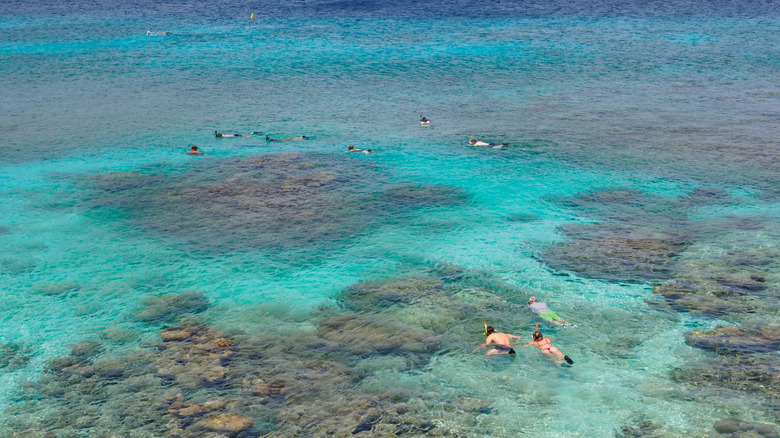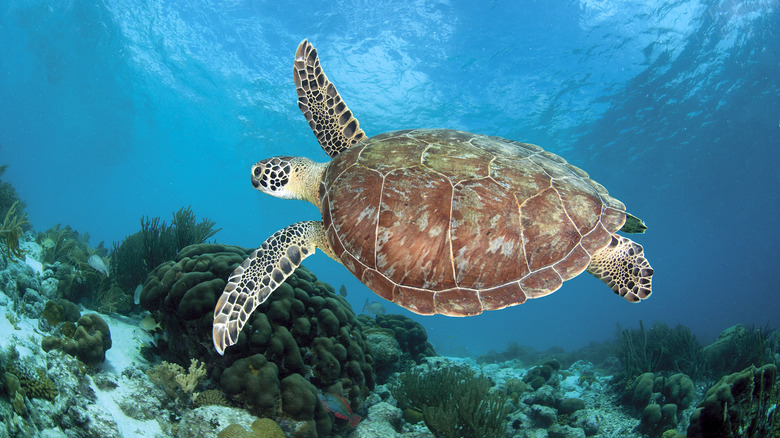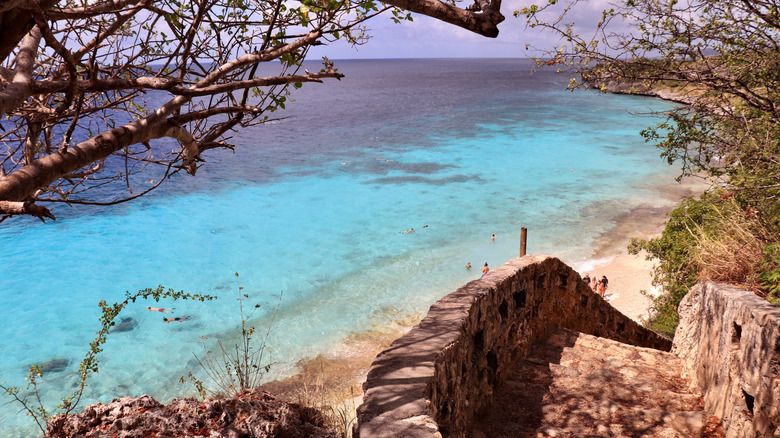The World's First Designated 'Blue Destination' Is Home To A Caribbean Marine Park Perfect For Snorkeling
Tucked away in the Dutch Caribbean lies a quiet, sun-drenched island more gorgeous than anyplace most eyes have ever laid upon. This paradise that has long been coveted by ocean lovers from all over the world is a quiet destination known for its laid-back energy and untouched natural beauty — unlike some of its more bustling neighbors. With vibrant architecture, glistening pink salt flats, and seriously incredible coral reefs, Bonaire is a place that feels equal parts wild and wonderfully preserved.
While the slow pace and stunning turquoise sea are some of the main draws of the island, what really sets it apart is the Bonaire National Marine Park, a protected marine area that has helped nab the title of the world's first official "Blue Destination." Here, ocean lovers will find schools of technicolor fish, graceful sea turtles, and perfectly preserved coral reefs that span much of the island's coastline — all while supporting a tourism model that champions sustainability. In an era where coral reefs are rapidly declining, Bonaire National Marine Park is one of the few places where marine life still flourishes — and it's a must-see for anyone drawn to the sea.
What makes Bonaire a 'Blue Destination?'
Bonaire is more than just a paradise for snorkelers (though it is undoubtedly one of the best), it's also a pioneer in sustainable marine conservation. Back in the late 1970s, the island made history by establishing the Bonaire Marine Park, committing to working toward preserving marine biodiversity. This legacy continues as the park was named the world's first "Blue Destination." According to Tourism Corporation Bonaire, "A Blue Destination makes sustainable use of ocean resources for growth, well-being and jobs while protecting the health of the ocean ecosystem."
Clearly, being a Blue Destination goes far beyond coral conservation. The concept integrates sustainability into every single part of life on the island, from its heritage to its economy and everyday lifestyle. Bonaire's efforts have also led to partnerships with the European Union, providing funding for projects in areas such renewable energy and marine biodiversity. But visitors also play a role in this conservation success story. A mandatory $40 annual nature fee charged to all park visitors supports maintenance and reef preservation. In return, beachgoers get access to some of the best snorkeling and diving sites in the world.
How to get to Bonaire, and must-visit attractions
Bonaire might sound like a little-known, off-the-beaten-path Caribbean island, but it's actually pretty easily accessible. Visitors can find direct flights from many larger international airports into Flamingo International Airport in Kralendijk, the largest city on the island. Once on the 24-mile-long island, it's relatively easy to get around, with renting a car or a scooter typically being the preferred method of transportation. Breathtaking year-round, Bonaire is situated outside of the hurricane belt, with the dry season (January through September) bringing calm seas and incredible visibility for snorkeling and diving.
If ocean activities are on the menu (and why wouldn't they be in the world's first Blue Destination?), 1000 Steps Beach is a prime spot for exploring stunning coral reefs and snorkeling with turtles. While the underwater world here is some of the best, the beach can hide sharp coral, so we highly recommend bringing a pair of water shoes with you.
Klein Bonaire is another must-see. This tiny island is not only one of the top snorkeling spots in the Caribbean, but it also has some of the most magnificent pearly-white shores in the world. The island is accessible by water taxi, but if you prefer to explore alongside the experts, you can also book a snorkeling tour or a catamaran cruise for a more curated experience.
In a world where many are chasing luxury, Bonaire is the type of place that reminds us that the greatest treasures lie in nature — and the things we do to protect it.


